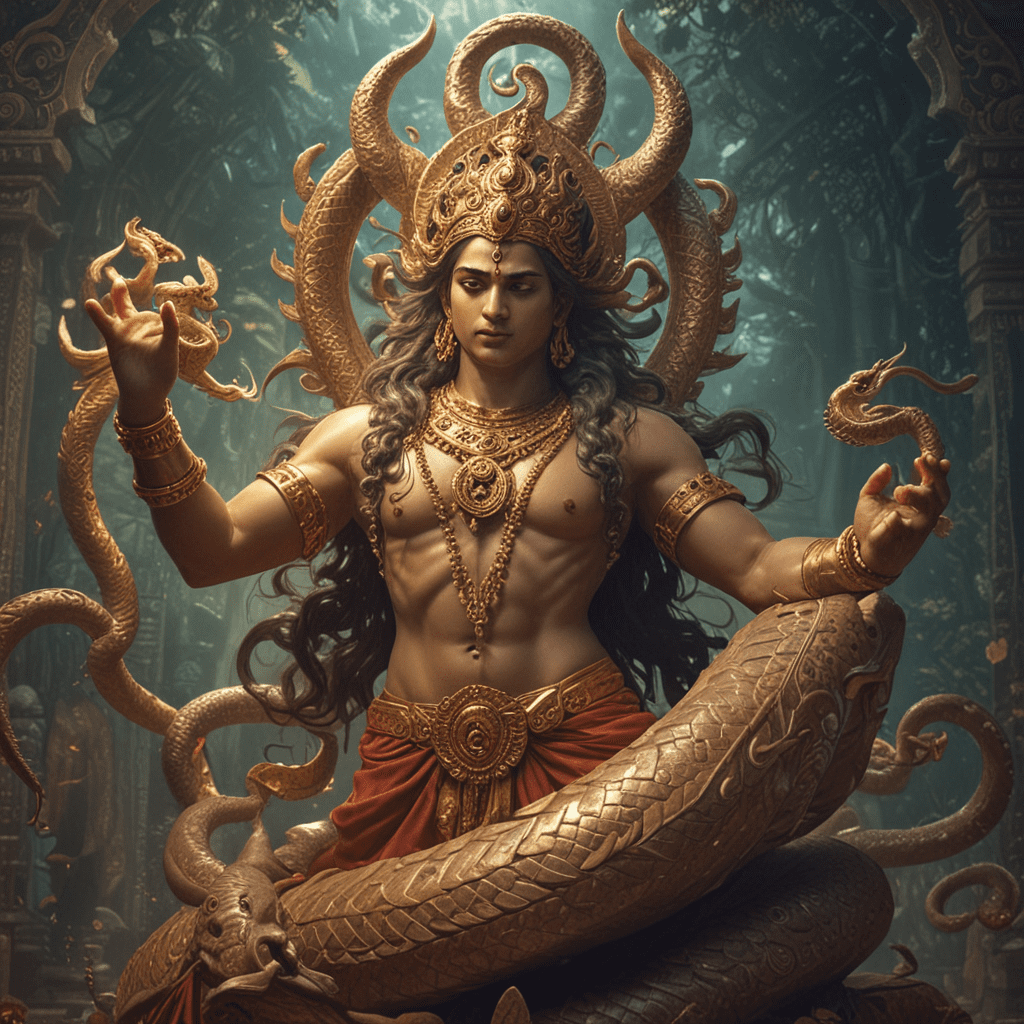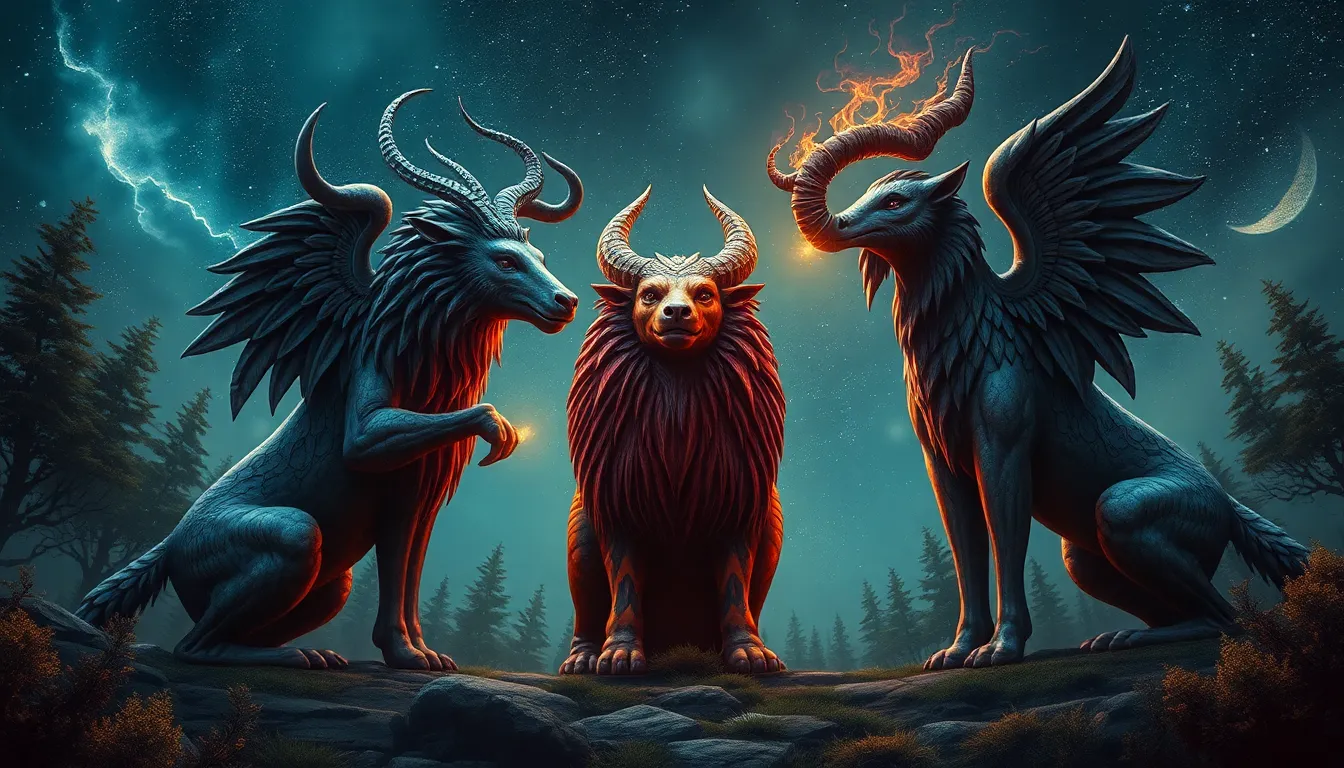The Divine Serpent: Ananta Shesha in Hindu Mythology
Protector of the Universe
In Hindu mythology, Ananta Shesha, also known as Shesha or Adi Shesha, is a primordial serpent of immense power and significance. He is considered the eternal protector of the universe, wielding dominion over the cosmos. Ananta Shesha represents the boundless expanse on which all creation rests, symbolizing the infinite and the eternal. His colossal form symbolizes the unwavering support that sustains the universe, ensuring its stability and order amidst the endless cycles of existence and dissolution.
Bed of Vishnu
Ananta Shesha is primarily known for being the bed of Vishnu, the supreme deity in the Hindu pantheon. Vishnu is often depicted reclining on Ananta Shesha, who serves as his resting place in the cosmic ocean of Kshirasagara. This iconic imagery symbolizes Vishnu's dominion over the forces of chaos and his role as the preserver and protector of the universe. Ananta Shesha's presence beneath Vishnu signifies the stability and order that Vishnu embodies, even amidst the relentless cosmic churnings and transformations.
Symbol of Eternity and Time
Ananta Shesha's name translates to "endless" or "infinite," reflecting his association with eternity and time. He is believed to have existed before the creation of the universe and will continue to exist even after its dissolution. Ananta Shesha's depiction as a serpent with multiple heads, each representing a specific period of time, further emphasizes his dominion over the endless cycles of existence. He embodies the cyclic nature of time, the constant flux of creation and destruction, and the eternal continuity of the universe.
Guardian of the Cosmic Waters
Ananta Shesha is also revered as the guardian of the cosmic waters that encircle the universe. These waters are known as Kshirasagara or the "ocean of milk" and are considered a primordial source of life and sustenance. Ananta Shesha's presence within these waters symbolizes their sacred and purifying qualities, as well as their role in the creation and preservation of the cosmos. He is believed to be the embodiment of the cosmic waters, ensuring their purity and protecting them from defilement.
Association with Vishnu
As a Manifestation of Vishnu
Ananta Shesha is considered a manifestation of Vishnu himself. He is said to represent the aspect of Vishnu that supports and sustains the universe. This connection between Ananta Shesha and Vishnu highlights the profound interdependence between the divine and the cosmos, with Ananta Shesha embodying the foundational support upon which Vishnu's creative and sustaining power rests.
Vishnu's Resting Place
As mentioned earlier, Ananta Shesha serves as the resting place of Vishnu. This intimate association symbolizes the deep connection between the divine and the eternal. Vishnu's repose on Ananta Shesha represents the state of cosmic harmony and balance, where the forces of creation, preservation, and destruction are held in equilibrium.
Symbol of Vishnu's Creation and Sustenance
Ananta Shesha's presence beneath Vishnu is not merely symbolic but also represents the active role he plays in Vishnu's creative and sustaining functions. Ananta Shesha's coils are believed to generate the cosmic energy that sustains the universe. He is thus seen as an integral aspect of Vishnu's creative power, providing the foundation upon which all existence rests.
Symbolism and Significance
Eternity and Infinity
Ananta Shesha's endless form and his association with time make him a potent symbol of eternity and infinity. He represents the boundless nature of existence and the cyclical nature of time. Ananta Shesha's presence serves as a reminder that our own existence is but a fleeting moment within the vast expanse of the eternal.
Cosmic Order and Balance
Ananta Shesha's role as the supporter of the universe and his association with Vishnu symbolize cosmic order and balance. He represents the underlying principles that govern the universe, ensuring its stability and harmony. Ananta Shesha's unwavering presence amidst the cosmic churnings signifies the resilience and orderliness of the cosmos.
Spiritual Awakening
Ananta Shesha is also seen as a symbol of spiritual awakening and enlightenment. His association with Vishnu, the supreme deity, suggests that he embodies the potential for spiritual growth and liberation. Meditation on Ananta Shesha is believed to promote inner peace, self-realization, and a deeper understanding of the nature of reality.
Protection and Prosperity
In many Hindu traditions, Ananta Shesha is revered as a symbol of protection and prosperity. He is believed to safeguard his devotees from harm and provide them with abundance. Ananta Shesha's association with the cosmic waters suggests his ability to purify and bless, bringing prosperity and well-being to his worshippers.
**FAQs:**
Q1. Who is Ananta Shesha?
A1. Ananta Shesha is a primordial serpent in Hindu mythology who represents the boundless expanse and eternity. He is considered the protector of the universe and the bed of Vishnu, the supreme deity.
Q2. Why is Ananta Shesha associated with Vishnu?
A2. Ananta Shesha is associated with Vishnu as a manifestation of his supporting and sustaining power. He serves as Vishnu's resting place and represents the cosmic energy that sustains the universe.
Q3. What does Ananta Shesha symbolize?
A3. Ananta Shesha symbolizes eternity, cosmic order, spiritual awakening, protection, and prosperity. His endless form represents the boundless nature of existence, while his association with Vishnu highlights the underlying principles of the cosmos.



